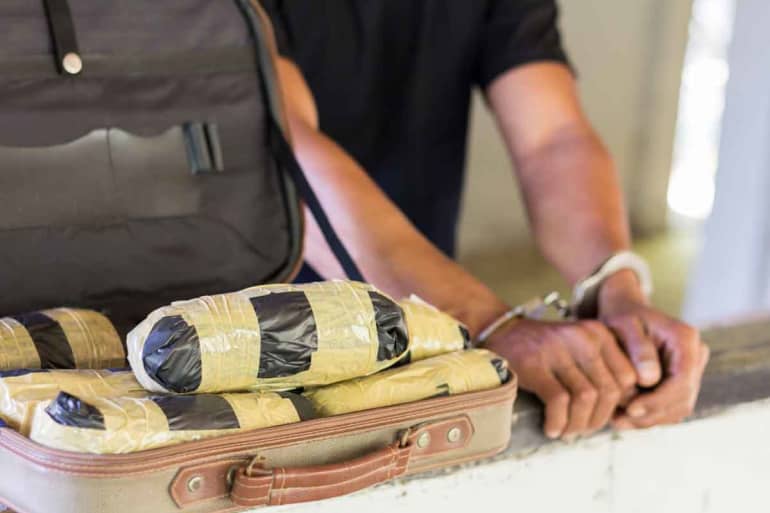With the primary focus being on the ongoing opioid crisis, it is easy to forget that heroin has also experienced a dramatic resurgence. According to SAMHSA data, nearly 494,000 people in the United States aged 12 years and older reported using heroin in the past year, which is an estimated rate of 0.2 per 100 persons. Additionally, the Centers for Disease Prevention and Control reports that 81,326 emergency department visits occurred for unintentional, heroin-related poisonings in America.
Economics is Driving the Resurgence of Heroin
The main reason why heroin has experienced a resurgence comes down to simple economics. When Prescription pain killers (whether procured legally or illegally) are significantly more expensive when compared to getting heroin. For example, an 80 mg OxyContin pill runs between $60 to $100 on the street. By comparison, Heroin costs around $10 per dose. This is due to the fact that cheaper and more potent heroin is being produced in countries such as Mexico.

Another alarming trend in the resurgence of heroin is the appearance of fentanyl on the scene. 80 to 100 times stronger than morphine, this synthetic opioid is often used as a cutting agent for heroin in order to increase profits. Additionally, fentanyl is often disguised as a more potent form of heroin.
The Connection Between Heroin and Prescription Painkillers
Heroin is an opiate that derives from the seed pods of the opium poppy plant. Whether if the drug is smoked, snorted, or injected, it converts to morphine and binds to opiate receptors.
Users experience an intense rush of pleasure and euphoria when using heroin. Prescription painkillers are synthetic opioids that are created in a laboratory. These medications contain opioids that are either derived from poppies or are synthetic substitutes. Prescription
Painkillers also bind to opiate receptors and produce similar effects as heroin.
They give “both a positive reinforcement — the effect when you take the drug — but also very strong negative reinforcer, which is that you’ll feel very sick when you don’t have the drug, those two factors together make opioids extremely addictive.”
It is estimated that 8 or every 10 heroin users started off using prescription painkiller medications. According to statistics from the National Institute on Drug Abuse, approximately 70,200 Americans died of drug overdoses attributed to either heroin or prescription painkillers. That breaks down to nearly 130 deaths per day. Overdose deaths attributed to prescription painkillers and heroin have increased six fold between 1999 and 2017.
The dramatic increase in overdose deaths from prescription painkillers and heroin in that period can be attributed to three things:
- In the 1990’s, there was a
significant increase in the prescribing of prescription painkiller medication as well as an sharp increase in overdose deaths. - Around 2010, there was a proliferation of cheap and potent heroin coming from Mexico. As a result, the number of heroin overdose deaths spiked.
- Another wave of increased overdose
deaths occurred around 2013. During this time, fentanyl became more prevalent. Fentanyl was found not only as a cutting agent for heroin, it is also found in counterfeit pills and even cut with cocaine.
In 2017, the Centers for Disease Prevention and Control (CDC) stated that the states with the highest overdose rates were the following:
- West Virginia (57.8 per 100,000)
- Ohio (46.3 per 100,000)
- Pennsylvania (44.3 per 100,000)
- District of Columbia (44.0 per 100,000
- Kentucky (37.2 per 100,000)
According to CDC data, the following states saw significant increases in overdose death rates from 2016-2017:
- Alabama
- Arizona
- California
- Connecticut
- Delaware
- Florida
- Georgia
- Illinois
- Indiana
- Kentucky
- Louisiana
- Maine
- Maryland
- Michigan
- New Jersey
- North Carolina
- Ohio
- Pennsylvania
- South Carolina
- Tennessee
- West Virginia
- Wisconsin
Hawaii Island Recovery Can Help!
If you or a loved one is struggling with heroin and/or prescription painkiller abuse, it is absolutely crucial that you get professional help immediately. With one phone call to Hawaii Island Recovery, you will receive the programming and support you need to break the vicious cycle of addiction for good.
Get Help Today!
If you or a loved one need help, call Hawaii Island Recovery toll-free right now.
866-390-5070 Hawaii Island Recovery
Hawaii Island Recovery 










